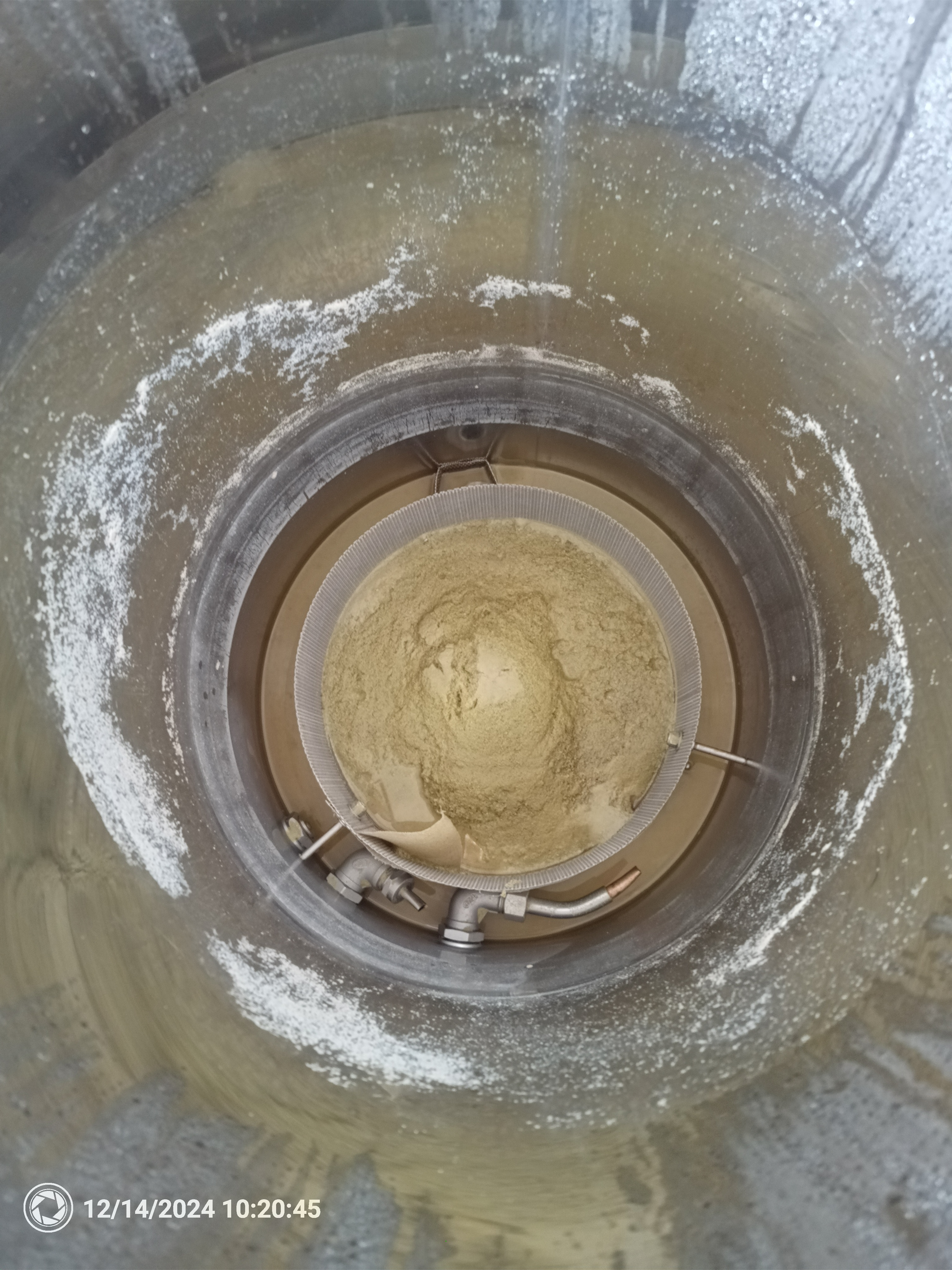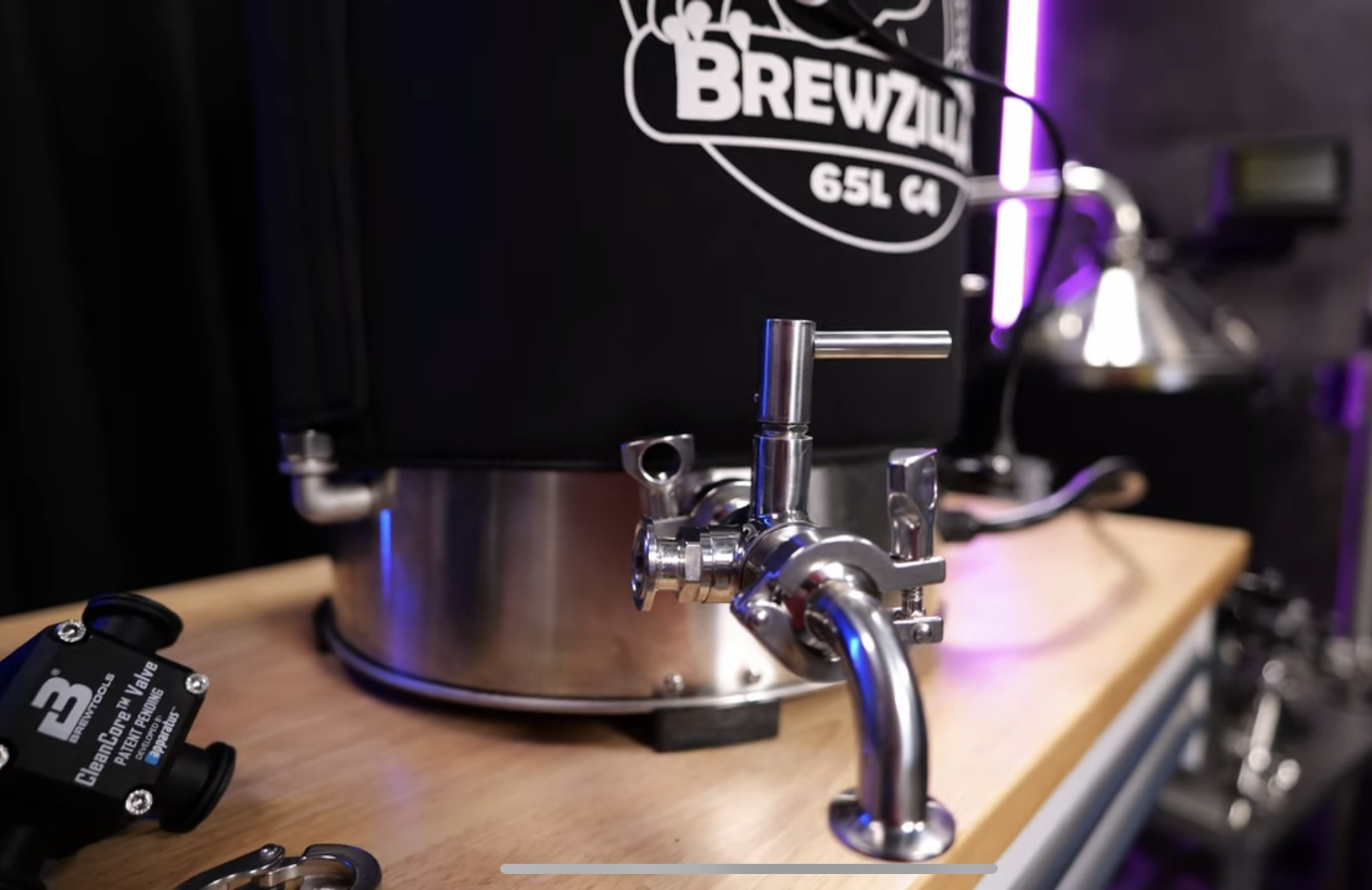@Spetz I don't have any experience with as much hops as you describe, so nothing very useful to contribute. Other than you comment about moving the chiller up and down. If you leave recirculation arm running during chill, that should do the same as bouncing your chiller, without having to babysit.
As for sparge, I do as you describe for the most part, but I've always used the top plate. After I add grains at mash in, I stir slowly for a few minutes to ensure I've got everything mixed well, no dough balls, then I put on the top plate (and BT thermometer through the middle hole) and let the recirc hose rest on there. No mash stirring. When mash is done, I lift basket and set on first set of feet for a few seconds, then to the bottom feet. I leave the top plate on and pour sparge water 0.5-1 gallon at a time from my pitcher and just let gravity run it through while I'm heating the wort to a boil.
I get 80-89% mash efficiency and I'm always impressed with that. I don't have problems with the grain bed getting compacted and preventing sparge water from passing through, and I get good efficiency. For me, there are no negatives with using the top plate.
Thanks for the comprehensive breakdown of your process! This is pretty much exactly as I did for the first few batches until I found the top plate was compressing the grain bed down, and I was left with either a stuck mash or stuck sparge almost every time. I was still getting 'ok' efficiency but it meant lots of babysitting and annoyances throughout the entire mash, which is precious free time wasted. One thing I do like about the top plate is the hole for the probe. Just to add, I don't use rice hulls (widely available from source, I just don't trust the cleanliness in this climate)
Perhaps I will try it again, follow your process, and see how it goes. Between then and now (using/not using top plate) i've got many more batches under my belt on the BZ and know the system better than before, so maybe it will improve. 80-89% mash efficiency is indeed impressive and exactly where I want to be on this system. I can't seem to budge the 72-75% range. I wasn't planning to make my crush any finer, but maybe I will slightly.
RE the chiller - I face power issues at the best of times here, which means the pump and whirlpool arm aren't running quite as well as they should be. I find bouncing it up and down every 5 minutes or so shaves off about 1/3 of chill time. If i'm not doing a hopstand, which adds on a significant amount of time to an already very long brew day, I simply leave it alone to do it's thing and i'm down to pitching temp in around 30-40 minutes. It's actually faster with double batches, since more of the IC is submerged.
I haven't had much issues, but I have only recently started making "hoppier" offerings. The most I have put in the kettle during boil/flameout/whirlpool is about 0.75/oz per gallon or roughly 22g/liter.
I think Kegland sells a shower head for the purposes of what you are looking for. The Kegland Sergeant Sparge Head. I have not used it, but I would definitely consider it for during the recirculating mash. I don't know if the imperial sparge arm is worthwhile and honestly doesn't fit perfectly on my 35L.
View attachment 868823
This photo I took from the internet and I have not read much on it, but it is cheaper than the imperial sparge arm and easily plugs into the existing hose of the brewzilla.
For the imperial sparge arm - I only used it for sparging. I did that for a bit and it really was nice to use with my old grainfather as a HLT, but I stopped using it to try to reduce things to cleanup and pull out for brewday. My process was to mash out, raise the malt pipe slowly, attach silicon tubing to the sparge arm from the pump of the grainfather, and then choke the pump down to prevent it from sparging too fast. It was great and hands free, but I felt like I was overhandling and wanted to simpify things. Originally I was going to raise the pipe and do a true vorlauf, but that also sounds like overhandling. I have two young kids at home and anything I can do to keep my hobby must be done.
I currently am just heating sparge water on my gas stove with two different stock pots and then pour over manually. It is easier to clean and dry a pot than my grainfather and a sparge arm. I don't use the top plate either since I stir every 15-30 minutes. My current process is to stir the grains one last time, raise the temp to mash out around 168-170, turn off the pump about 5 minutes after reaches the target temperature, then wait another 5-10minutes before puling the malt pipe. Slowly pull the malt pipe up (I only have one set of feet on my gen4 in the US, BS). Let the runnings pull through a bit until I can see a "dry" grainbed and then slowly pour about a half gallon to a gallon, 2-3x (waiting 5-10 minutes between each pourover) and I have been getting 80% brewhouse efficiency.
I am considering adding 1-2 gallons of water while raising the temp to mash out, stir it up, turn off the pump, wait 5-10 minutes and then raise the malt pipe. Then I am hoping I can have less time sparging.
@jdubdvdt thank you also for your breakdown! Firstly yes, total BS about the lack of feet in the middle...as a little side note, when I took delivery of my BZ and tested it for the first time, the pump clogged and started making the most horrendous dystopian grating/moaning sound i've ever heard in a brewing environment. You could have sampled it and put it in the next Blade Runner movie. No wort/grain/anything running through it, just water. I took the pump apart and found small shards and shavings of metal inside it, all magnetically stuck to the impeller. Turns out they were from the machining of the feet on the malt pipe! Spent a few hours with some tweezers picking off parts of (very, very sharp) metal between the weld of the feet. The middle row of feet was the worst - perhaps a coincidence, perhaps not...
I was looking at the sargeant sparge head and can find one here in Indo actually. As others have mentioned too, I hear it's renowned for clogging so probably only worthy of being used for sparging. I think I may just end up building my own manifold out of CPVC. I'm going to give the top plate another go as mentioned
@micraftbeer above, but i'm set on trying something different to improve both efficiency and recirculation without channeling or compressing the grain bed. Like yourself, I have stirred numerous batches all the way through, around every 10-20 minutes or so, and achieved pretty good efficiency too, but want to use that time to get on with other stuff instead and simply rely on a better and more stable setup. I'm also quite hesitant to go too crazy with stirring since I don't always trust that malt pipe screen to stay in place.
That's awesome you still have the grainfather to hand for the sparge. My previous setup (stainless stockpots) succumbed to rust unfortunately, so I no longer have the luxury of using anything in parallel with the Brewzilla to take care of the sparge water. It's incredibly frustrating. For now it's a brewbucket filled with 80c+ water that sites for an hour then gets dumped over the top in 2 rounds (around 6L each time).
Perhaps I'm rushing my sparge and losing efficiency there. I always find myself having to either top up the sparge water or top up the kettle after removing the pipe (doesn't help that the water level markers are basically impossible to see without removing the malt pipe) to reach my pre-boil volume, probably because i'm not waiting long enough for it to drain, or because my grain bed isn't draining properly. Without fail, after all sparge water has been delivered, I've missed the target volume on every single batch (albeit not by very far). I resort to either topping up the sparge water and rinsing the grains one last time, quickly lifting off the malt pipe a few moments before target volume is reached, or just top up the kettle. I'm going to adopt your method and slow things down, leaving more time between sparges and waiting for every last drop before considering any top ups - essentially, this is why I'm missing the target, although I am generally very patient with it and let it run until the end. This has also got me thinking that perhaps my grain absorption rate is off..? I have it dialed in at 0.8L/Kg (0.21galon/lb) at the moment.
It would be handy if Brewfather had pre-boil and post-boil volumes as both hot and cold, would make the maths slightly easier and simplify other variables...especially when using an immersion chiller.
My hoppier/hopstand beers are generally hit with around 100-120grams in the kettle for my 5gal batches, so basically same as you. Maybe the increased trub loss is just down to the unpredictable nature in which the bottom screen behaves. Sometimes it works great, sometimes not. I also rack to FV via the recirculation arm + silicone tube, not the spigot.
(it's probably worth mentioning - all of the above in based on single, 23.5L batches, not double batches, in the 65L BZ)

















































![Craft A Brew - Safale BE-256 Yeast - Fermentis - Belgian Ale Dry Yeast - For Belgian & Strong Ales - Ingredients for Home Brewing - Beer Making Supplies - [3 Pack]](https://m.media-amazon.com/images/I/51bcKEwQmWL._SL500_.jpg)












